I have used several Nikon D90 cameras at various times. In whatever conditions they were not: I constantly carried cameras with me in hikes, reinstalled lenses millions of times, in the rain, in the cold and on hot days - but the cameras worked like clockwork. Of course, I understand that good copies of Nikon D90 may have come across, but still, many years of trouble-free operation and mileage of over 130.000 (one hundred thirty thousand) of one copy and over 250.000 (a quarter of a million) of the second copy only gives rise to positive reviews.
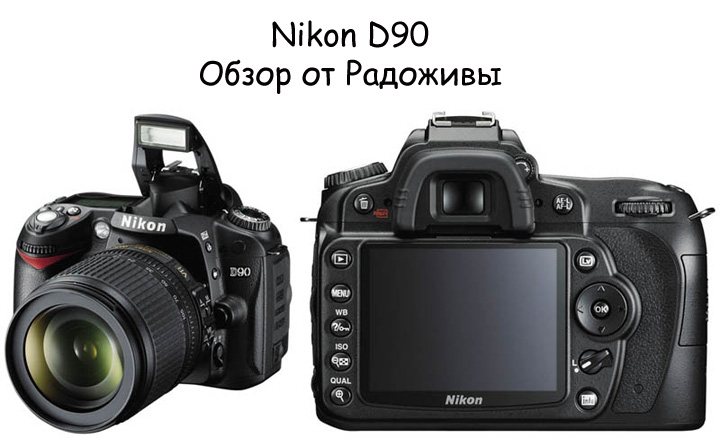
Review of the Nikon D90. View of the camera itself.
To fully understand and understand the camera, you just need read the instructionsIt’s long and boring, but I don’t see another way. The quality of the pictures very much depends on the lens and the methodology of your shooting, as well as image control mode, therefore, to say that the camera shoots better or worse is blasphemy, we can only talk about its ergonomics, technical characteristics and direct work experience. Always remember that important how to take pictures, but not by what means.
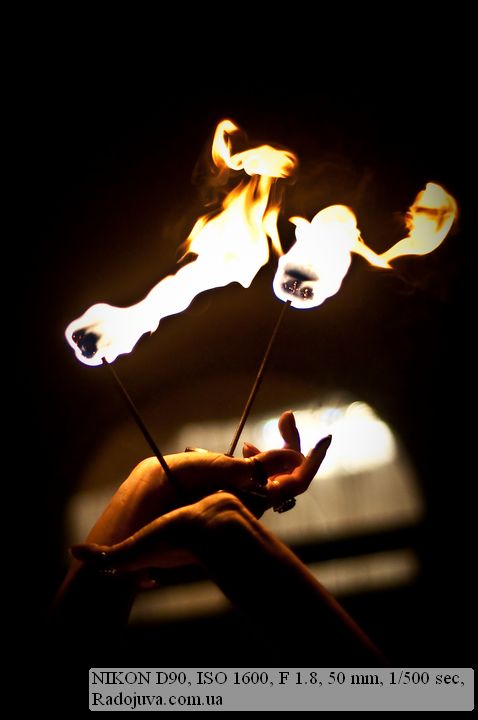
Sample photos on Nikon D90
And so, the camera belongs to the class of digital mirrors mid-range cameras... The Nikon D90 is often said to be an advanced amateur camera. Therefore, please note that this is not a professional camera, as they often write on the Internet (especially in online stores), professional cameras - is D300(s) D200, D700, D3(x, s), D4, D800(E) - therefore, you need to understand that the device is more aimed at amateurs than at professionals. The main feature of the camera is that the set of functions allows you to use the Nikon D90 just as well as professional technology, but with some limitations.
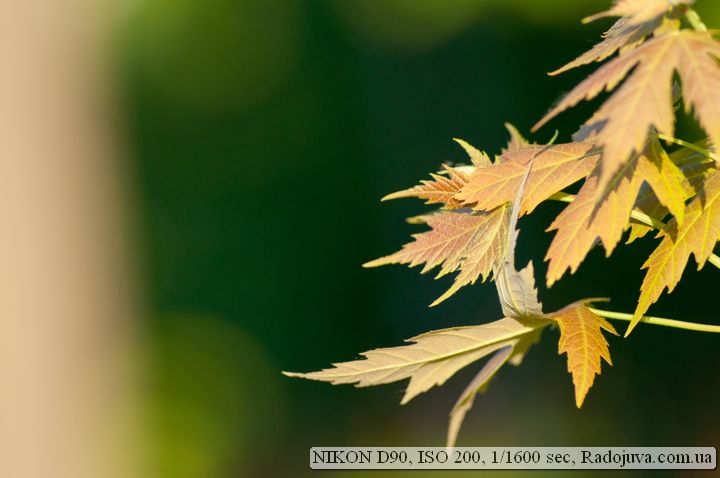
Sample photo on Nikon D90
The main parameters of Nikon D90, which are worth paying attention to
1. Live view
2. HD video 1280 * 720 24k \ s
3MP CMOS sensor
4. Aluminum-magnesium case with a bunch of buttons
5. Built-in autofocus drive
6. Additional screen
7. 4.5 frames \ second
8. Flash operating in Comand mode and FP mode
9. Lithium-ion battery
10. Matrix cleaning system
11. Bracketing exposure
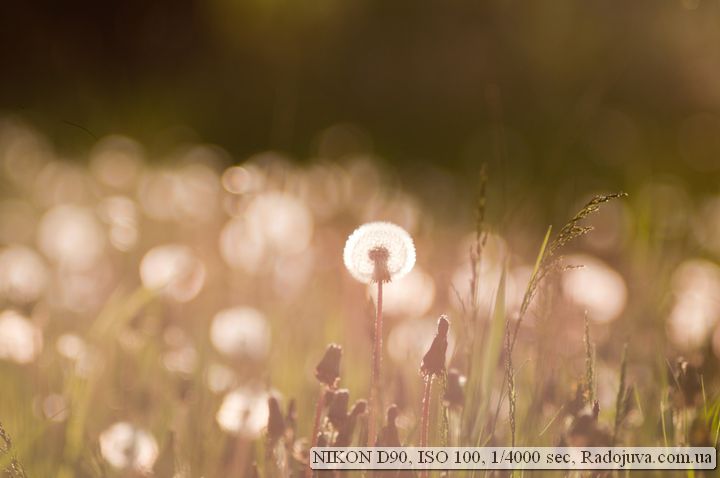
Example photo on Nikon D90
Now let's go through each item from a practical point of view.
1. Live View. Under live view it means “Live View” and in Nikon D90 it is quite a strong point.
First: made for the D90 very large screen (920.000 points - the same as in professional D3, D700) from which you can not tear yourself away. He even knows how to show slide shows to music!
Secondly: very convenient button to switch to live view - just clicked and the incomprehensible digital SLR turned into an ordinary soap box (useful for people who just switched to SLR cameras and just can't figure out what to see through the viewfinder).
Third: this mode allows clearly control focus at any point in your frame. Let’s take a closer look - when sighting you can select any area in the frame with the joystick and zoom it in on a scale of 1 to 1 - that is, select any point for focusing. This mode is indispensable when working with manual (non-autofocus lenses) and a tripod.
True, it takes time to get used to the work of the mirror, which adds unnecessary sounds and clinks when working. The mirror and shutter clicks when Live View is enabled, and when shooting, they click twice. It may seem that the camera is taking extra frames. A huge disadvantage of this mode is that autofocus works very, very slowly, and in video mode it does not work at all.
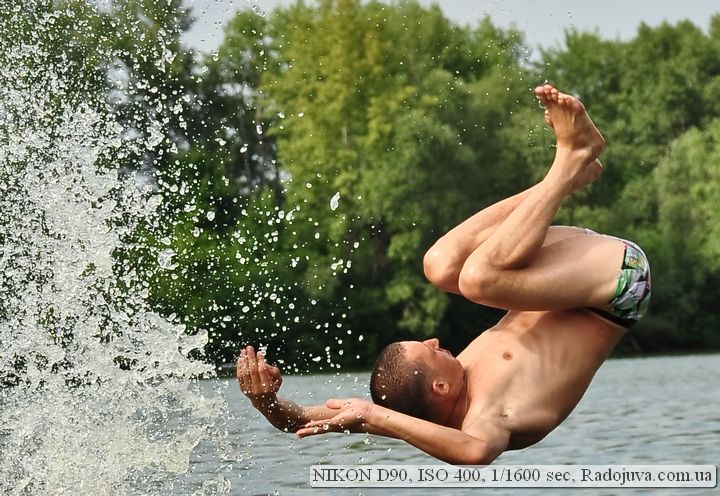
Photo on Nikon D90
2.HD video 1280 * 720 24k \ s without autofocus - absolutely unnecessary thing for a photographer
Why not necessary - because who will watch the video without autofocus? Okay, you can still take photos somehow in manual focus mode, but video with manual focus, when the scene changes at the speed of light, is a very difficult task. I recommend shooting video only with a tripod. A couple of times I shot a video with my hands - you can shoot, but again, it's very, very difficult. One more camera - Nikon D5000 - has video without autofocus.
The video itself is quite solid, in Motion JPEG format - which means that it “weighs” a lot. I advise you to immediately distill it into any of the popular formats after shooting - save a lot of disk space. Also, I advise you to block the exposure when shooting a video so that there are no tonal differences when changing the composition in the frame. Another serious problem with video is limiting the duration of the clip in 1280*720 up to 5 minutes. On the one hand, 5 minutes is quite enough to create short video selections, but I had to film my friend's performance once, and the 5 minute limit made the process very difficult. Also, after several 5-minute clips, the camera starts shooting clips up to 30 seconds long and turns off automatically, most likely due to the sensor overheating. The Nikon D90 is the first camera from Nikon with the ability to shoot video, so you shouldn't ask more of it. If you need a Nikon camera that shoots videos well and has automatic focus, then I advise you to look at the model Nikon D3100, Nikon D5100 и Nikon D7000.
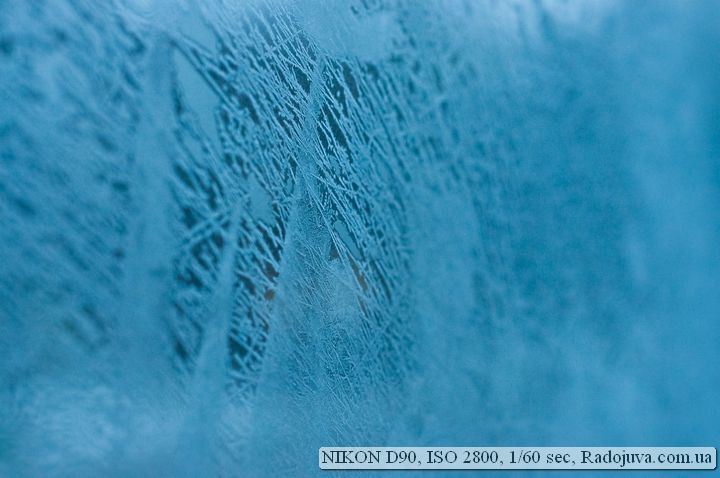
Photo on the Nikon D90. At high ISO.
3MP CMOS - just right
Why more? The more pixels - the higher the density and there may be more noise, due to the fact that the matrix cell is smaller and smaller - which means that it can catch less light. I advise you to read my article Battle of Megapixels.
The matrix is excellent. Of course, I already see noise at ISO 400, but at ISO 1600 they are still quite tolerant.
A very important point I noticed when working at high ISO, that the noise increases sharply after ISO 2500, that is, at ISO 2500 you can still squeeze something out, but then the quality of the photo drops dramatically. I recommend shooting at the proven ISO 200 and not raising ISO above 1600. ISO LO-1 (100) should be enabled only on a bright day, when you need to get some kind of portrait with an open aperture in order to keep within the shutter speed of 1 / 4000s. The values of ISO Hi1, Hi0.3, Hi0.7 are a kind of software wrapping of ISO, at such values it is practically impossible to get a low-noise picture.
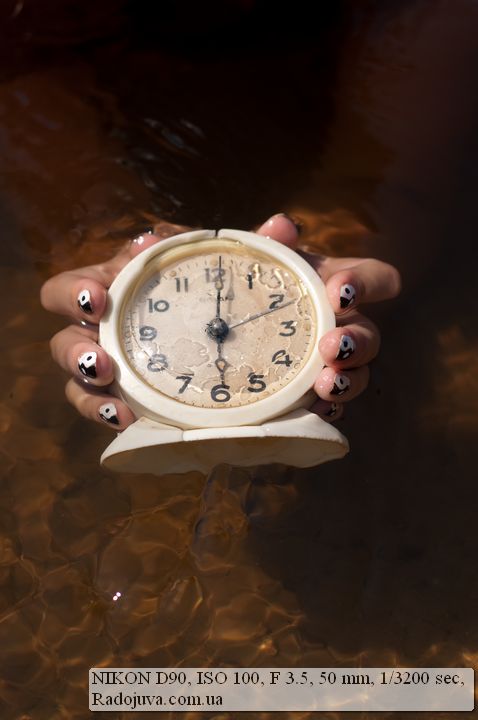
Sample photo on Nikon D90
4. Aluminum-magnesium housing (part)
In the introduction, I wrote that I constantly use, drag, ride with this camera and it feels quite adequately. Aluminum-magnesium alloy (although I did not find such information on the manufacturer’s website, but by weight, it’s not plastic) and one rubber insert, make the camera very practical, well-knocked down and provide excellent weight balance with different lenses. Perhaps for little hands it will be a little bit wrong, but for the serious hand of the photographer it’s just lovely.
On the body is a whole bunch of buttons. In the camera - the more the better. You can get quick access to all the basic functions and not scroll through the huge menu. I configured the programmable button to change the type of focus.
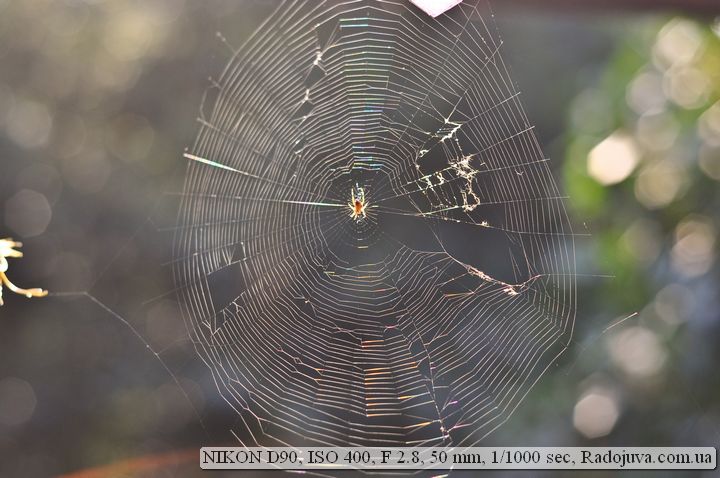
Wildlife Photo on Nikon D90
5. Built-in autofocus drive
A panacea for saving money and a panacea for professionals. The Nikon D90 camera has a built-in auto focus motor (screwdriver) for working with lenses marked AF. This allows you to use optics without a built-in focusing system (which means that you can use any autofocus lenses). Usually such optics are cheaper, for example, you can buy Nikon 50mm F1.8D AF for only $ 150 and feel like a real professional. Also, a huge portion of professional optics simply go without an auto focus motor. For example, there is simply no analogue for the Nikkor 135 DC with a built-in autofocus motor. More details about the compatibility of Nikon lenses in my article - Lens difference.
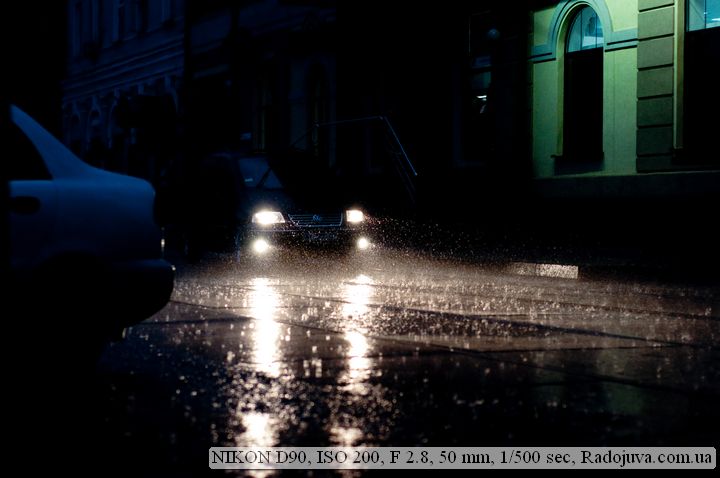
Photo on Nikon D90
6. Optional monochronous screen.
Recently I read on the Internet that the small monochrome display on the D90 is archaism, I was very surprised by this. In fact, it is not, the additional display is very good ergonomics and saves time, battery power, unnecessary movements. Let me explain - the display is always on top and you do not need to turn the camera upside down to look at the main display, secondly, it has a very high contrast in the sun (everything is visible), thirdly, it does not consume the battery (even the backlight mode of the additional screen uses a lot less charge than the main display). In general, the camera looks even more impressive with him. By the way - the backlight mode is turned on by turning the camera switch to the right. He himself then returns to its original position. Below is one of the most serious disadvantages associated with this lever.
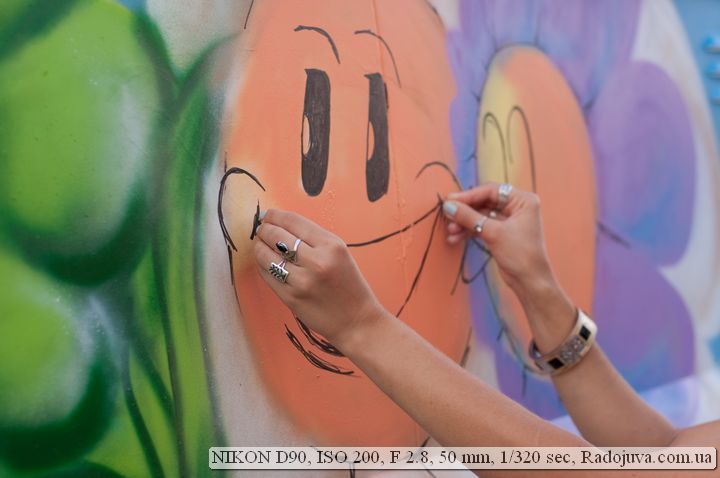
Photo on Nikon D90
7 - 4.5 frames / second
Someone can say, they say, stamps from Kenon are shot at 10 frames per second, the same D3 shoots 8 frames per second, but what can I say, D300 with a battery pack squeezes 8 frames per second. And now the question is - why do you need it? Burst shooting is very rare. 3 frames per second is already quite enough, the rest is only for specific tasks. Therefore, almost 5 frames per second is a pretty strong point. Conduct an experiment - at what speed can you press the camera button in the frame shooting mode? The same 5 times plus or minus will come out. In any case, the Nikon D90 has a higher rate of fire than the new, very expensive professional Nikon D800which can shoot at speeds up to 4 fps.
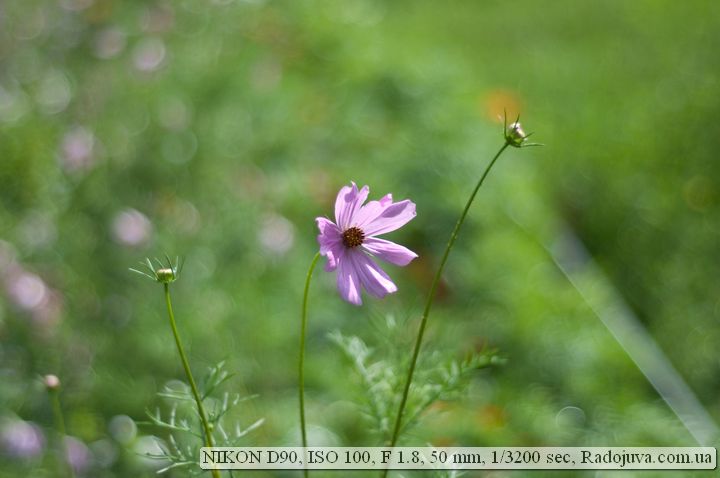
Sample photo on Nikon D90
8. Comand mode flash and FP support
Classics from Nikon. No need to buy expensive flash units or synchronizers - just go to the bracketing \ flash menu and select flash control mode C. Set the channel and group and control external flash units, such as SB-600, SB-700, SB-900, SB-800 и SB-910. Also do not forget that you can configure the built-in flash so that it gives only commands and does not take part in the shooting itself.
Then the most interesting - quick sync mode... With external flashes, you can set any shutter speed, up to 1/4000. Those who have not encountered such a problem will not understand; who knows, they will be glad. Few cameras support this mode. Why you need this, you can find, for example, in my article - 'flash in the afternoon '.
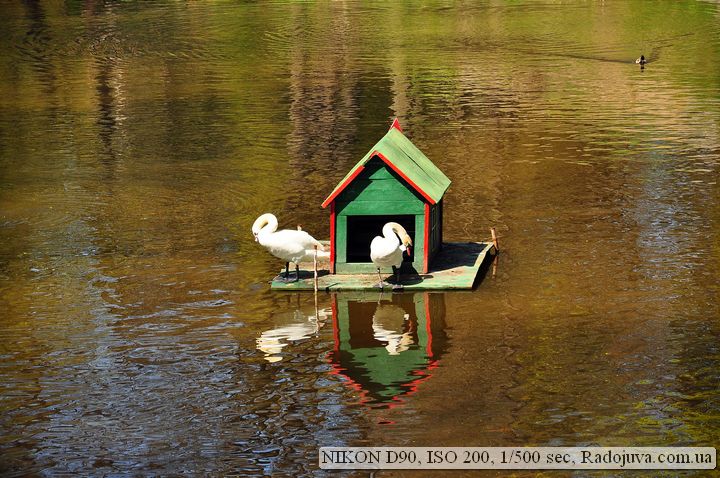
Sample photo on Nikon D90
9. Rechargeable Li-ion Battery EN-EL3e
Great armor-piercing battery. Also suitable for D700, D200, D300(s) etc. Withstands flash without over 2000 frames. The instructions say that it can provide work for 1200 shots, a third made with the flash - somewhere it is. The number of shots is greatly affected by the type of lens (e.g. VR mode), delay modes of the main display, etc.
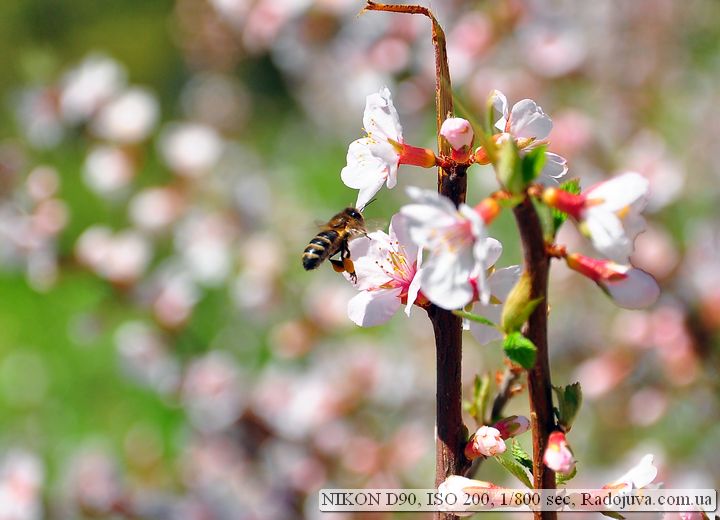
Sample photo on Nikon D90
10. Matrix cleaning system
A very useful thing. I recommend setting the cleaning when you turn off the camera, because when you turn it on, you often need to take pictures right away, and when you turn it off, let it clean for yourself. I advise you about cleaning the matrix read here.
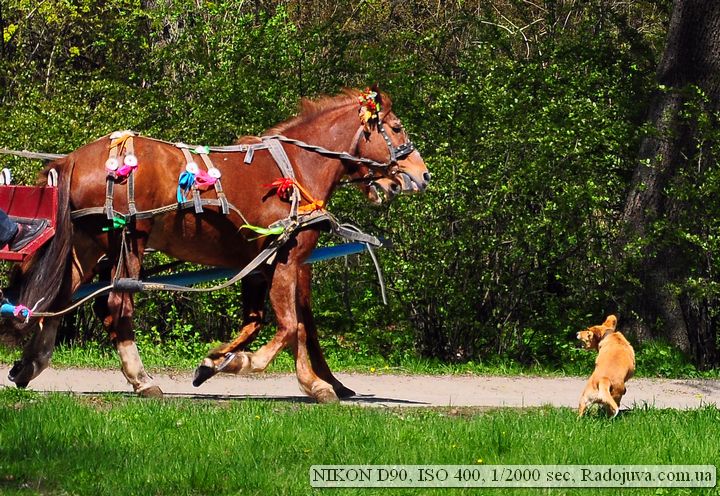
Sample photo on Nikon D90
11. Bracketing exposure
Bracketing allows you to shoot without fear for the correct exposure. True, this requires additional time, battery wear and fast filling of the memory card. It is under bracketing 4.5 frames per second are useful. I recommend not much use bracketing, it’s better to adjust the camera (especially the amendment exposure) and make one frame in RAW, and then, if anything, hold it out programmatically rather than slam the shutter on expo.
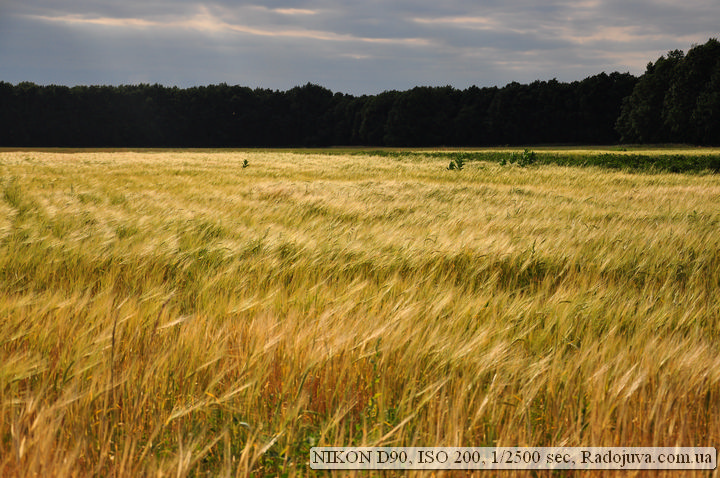
Nature photo on Nikon D90
I would like to note a number of huge advantages: wA wide range of functions to improve the picture - noise reduction functions, D-lighting etc.
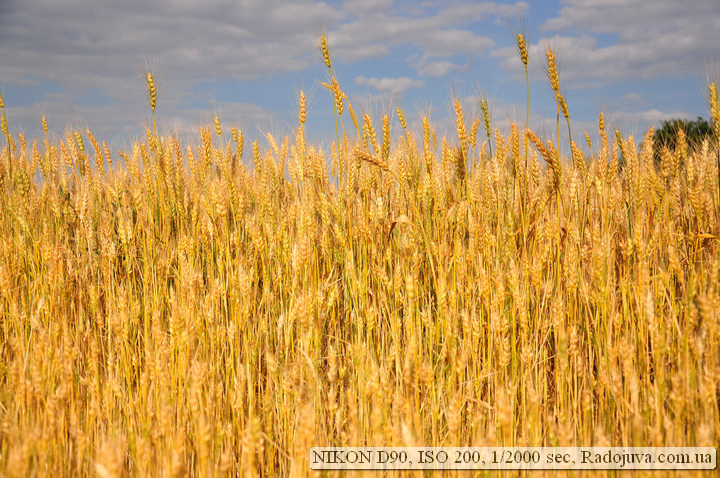
Nikon D90 photo
The disadvantages of the Nikon D90:
The strongest minus when working with the camera, I consider a strong return of the shutdown lever - that is, when you turn on the backlight of the additional screen, the lever moves back to the “ON” position, but its inertia is very strong and it goes further and turns off the camera (to the “OFF” position), therefore, you need to smoothly remove your finger after turning on the backlight of the additional screen. Very unpleasant stories are associated with this glitch, when at night, at important moments, the camera simply went out after setting the settings on the external display. Also, this switch is pretty loose, but it still works stably.
Also, after active work for a year, the rubber band, which is located to the right of the display, fell off, it expanded slightly and peeled off. I noticed that the rubber band covers the activity indicator of the memory card, that is, there is a fear of pushing the indicator deep into the camera and damaging it. The disease was treated by cutting off excess rubber and superglue. D90 got this disease from D200 and from D80. But, of course, I use my D90 camera a lot.
Exposure in 1/4000 second - if you haven’t understood yet, then when shooting with fast lenses starting with aperture of F / 1.8 and lower, you will miss the shutter speed, even at the lowest ISO.
Metering (exposure meter) does not work with non-chip lenses. It would be nothing, but this is just the camera and inferior to professional ones, such as D200 and older, almost any lens can be attached to them and the camera will operate in semi-automatic aperture priority mode or in good old manual mode. This really limits the operation of the camera with completely manual (without processor contacts) lenses, for example, Soviet ones - and you have to completely set all the settings “by eye”. Personally, I would very much like this function, since I am a fan of photographing with Soviet (and post-Soviet) optics.
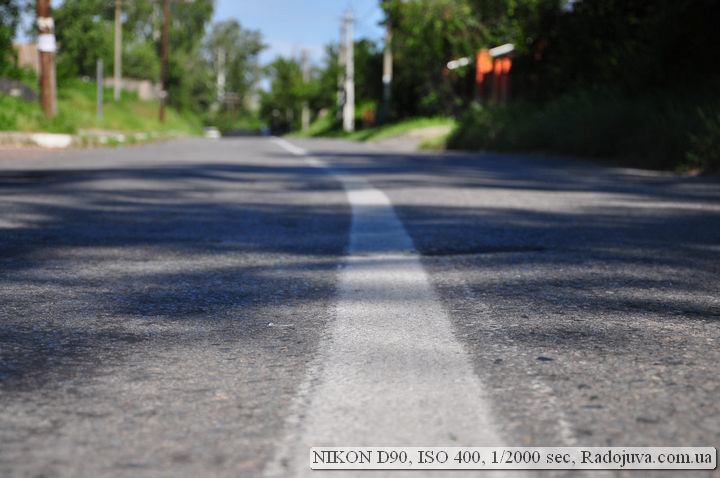
Photo on Nikon D90
For 3d tracking focus, there are not enough points (focus areas), and indeed, not enough focus points for such a solid camera.
No one wants depth of field view button imaged space. I use it very rarely, for example, in macro photography, but usually in 99% it is not needed. A funny thing that I advise you to check is to raise the flash and press the depth of field button (it’s located below, under the lens mount) and you will see that for a couple of seconds the flash works as a flashlight (using the strobe effect)
I consider one more unnecessary button \ property focus point lock button. It was useful to me only a couple of times, when I very strongly brought the camera to my face and accidentally pressed the joystick, thereby changing the focus point, in other cases, the point retains its position. It would be better instead of it to set the lever for changing the metering (as in older models), and so you have to press the top button near the external display and turn one of the selectors.
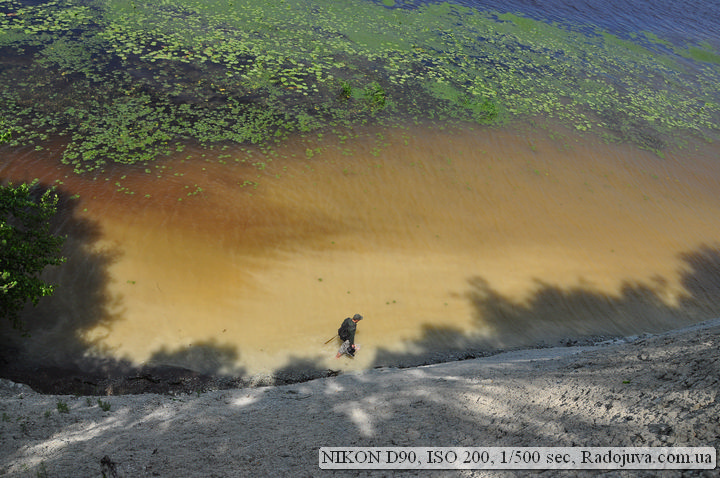
Photo at Nikon D90
Brief comparison with Nikon D80:
D90 is a descendant Nikon D80, which has an increased rate of fire, a different type of sensor (CMOS VS CCD), a central multi selector button is added, there is a Live View function and the ability to record video, and the display is also enlarged. Battery, menu navigation, ergonomics and other important functions remained the same. If you Nikon D80 I do not recommend upgrading the Nikon D90, as the main functions of the cameras are the same.
A brief comparison of Nikon 90 with D300, D300s:
D300, D300s Are professional cameras from Nikon, and the amateur D90 cannot compete with them. IN D300, D300s stronger body excerpt up to 1/8000, a professional camera control interface, high rate of fire and the ability to work with manual lenses, this is where the main differences end. I do not recommend overpaying for D300, D300s unless you have to shoot 1000 frames every day.
A brief comparison of Nikon 90 with D7000:
D7000 surpasses even the Nikon D300 in a number of parameters, D300s, and especially Nikon D90, because as an upgrade I recommend only Nikon D7000 or already ff Nikon D700, D600, D800.
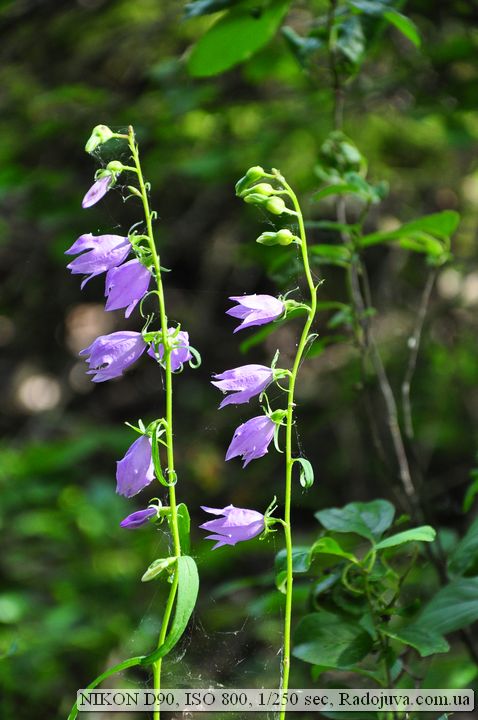
Photo at Nikon D90
Fit in the Nikon D90 Camera I think control with infrared remote Nikon ML-L3It costs a penny, and gives a lot of opportunities.
Attention: The final result of the image in the photograph depends very much on a large number of factors and the camera does not play the first role in this quantity, therefore, when photographing, remember - important how to take pictures, and don't try hard to find the best camera.
Sample Photos
The photos in the gallery below were shot on a budget lens Yongnuo 35mm f / 2 (model YN35mm F2N for Nikon cameras) and shown without treatment. Part of the photos is the conversion of the source RAW files by the original Nikon ViewNX-i utility without any additional adjustments, the other part is the original on-camera JPEG.
Download source files in format JPEG can at this link (114 files in the '.JPG' format, 735 MB).
More examples of photos, as well as source files, can be found in the reviews:
- YONGNUO LENS YN50mm F1.4N E
- Nikon DX AF-S Nikkor 18-55mm 1: 3.5-5.6GII ED SWM Aspherical
- Nikon N AF-S Nikkor 58mm 1: 1.4G Nano Crystal Coat SWM Aspherical
- YONGNUO 50mm 1: 1.8 (YN50mm F1.8N)
- Tokina VCM-S AT-X PRO SD 70-200 F4 (IF) FX N / AIS
- Nikon AF Nikkor 28mm 1: 2.8 (MKI)
- Tokina AT-X 80-400mm 1: 4.5-5.6 (AT-X 840 AF-II)
- Nikon AF Nikkor 20mm 1: 2.8D
- Tamron PZD Di 28-300mm F / 3.5-6.3 Piezo Drive VC Model A010
- Nikon Zoom-NIKKOR 80-200mm 1: 4.5 (AI, MKII)
- SIGMA ZOOM 28-105mm D 1: 2.8-4 DG
- Nikon AF Nikkor 28-70mm 1: 3.5-4.5 (MKI)
- Sigma 135-400mm 1: 4.5-5.6 D APO
- Tokina SD 24-70 F2.8 (IF) FX AT-X PRO Aspherical
- Nikon AF Micro Nikkor 105mm 1: 2.8 (MKI)
- Tamron 16-300mm F / 3.5-6.3 Di II PZD VC Model B016
- Tokina 107 Fisheye 10-17mm F3.5-4.5 DX AT-X Internal Focus
- INDUSTRAR 22U-1 1: 3,5 F = 50mm P
- LOMO RO501-1 F = 100 1: 2
- Nikon ED AF Nikkor 80-200mm 1: 2.8 (MKI)
- LOMO RO500-1 F = 90 1: 2
- Tokina AT-X PRO AF 28-70mm 1: 2.6-2.8 (Tokina AT-X 270 AF PRO)
- Nikon Lens Series E Zoom 75-150mm 1: 3.5 (MKII)
- Sigma DC 17-70mm 1: 2.8-4.5 MACRO HSM
- Tokina AT-X PRO SD 11-20 F2.8 (IF) DX ASPHERICAL
- SIGMA ZOOM 55-200mm 1: 4-5.6 DC HSM
- TAIR-3 4,5 / 300A
- Nikon DX AF-S Nikkor 55-200mm 1: 4-5.6GII ED VR II
- QUANTARAY TECH-10 NF AF MULTI-COATED 1: 4-5.6 f = 75-300mm
- Nikon NIKKOR-SC Auto 1: 1.2 f = 55mm
- Sigma DC 18-50mm 1: 2.8 EX MACRO HSM
- Tamron AF Aspherical 28-80mm 1: 3.5-5.6 177D
- Quantaray 70-300mm 1: 4-5.6 D LDO MACRO for Nikon AF, MACRO (200-300)
- SIGMA ZOOM 28-200mmD 1: 3.8-5.6 UC Aspherical
- Quantaray 70-300mm 1: 4-5.6 D LDO MACRO for Nikon AF
- MC PANCOLAR 1,8 / 50 CARL ZEISS JENA DDR
- YONGNUO 40mm 1: 2.8 (YN40mm F2.8N)
- Sigma 70-300mm D 1: 4-5.6 APO DG
- TOKINA AF 70-210 1: 4-5.6
- Sigma 70-300mm 1: 4-5.6 D DL MACRO SUPER
- Quantaray for Nikon AF 28-300mm 1: 3.5-6.3 LDO Multi-Coated (28-300mmD Ashperical IF)
- SIGMA ZOOM 28-300mm 1: 3.5-6.3 DG MACRO
- YONGNUO LENS YN 14mm F 2.8 N
- Tamron AF Tele-Macro 70-210mm 1: 4-5.6 158DN
- I-26m-U 2,8 / 52
- Sigma Zoom DC 18-200mm 1: 3.5-6.3 II HSM OS
- Yongnuo YN 85mm F1.8N
- INDUSTRAR 22U-1 1: 3,5 F = 50mm P
- SIGMA ZOOM 18-50mm 1: 2.8 EX DC (D)
- Nikon IX-NIKKOR 60-180mm 1: 4-5.6
- YONGNUO LENS 100mm 1: 2 (YN100mm F2N, for Nikon)
- PROMASTER DIGITAL XR EDO AF Aspherical LD (IF) 18-200mm 1: 3.5-6.3 Macro
- Tamron Di II SP 17-50mm F / 2.8 VC
- MC HELIOS-44M-4 58mm 1: 2
- YONGNUO 35mm 1: 2 (YN35mm F2N)
- Sigma DC 17-70mm 1: 2.8-4.5
- Nikon ED AF-S Nikkor 300mm 1: 4D IF Silent Wave Motor
- Yongnuo YN60mm F2NE MF MACRO
Prices for modern Nikon cameras in popular stores can look at this link.
Video review, retrospective
Comments on this post do not require registration. Anyone can leave a comment.
Conclusions:
In general, the Nikon D90 camera is simply lovely, a wide range of functions will allow both professional and amateur to work. The speed of work and the quality of the picture are very pleasing.
Material prepared Arkady Shapoval.





































Thank you!
Good evening, but if you compare the 600D and D5100 in general terms.
Here in general terms http://snapsort.com/compare/Canon-600d-vs-Nikon-D5100
which is better than etu or D5100 if I sometimes need to make a video for my friends to take on vacation .. well, I’ll understand more clearly!
Hello, Arkady.
What camera do you think is best for me to buy as a new photographer at the moment, but in the future I want to take up photography professionally! That is, in the next six months, a year, not to look for a replacement camera, and in case of need only to change the lenses!
The choice is between: Nikon D90 18-105 mm or Nikon D5100 18-105 mm?
Thanks a lot for your answer!
In your place, I would take the D90 because of a little more functionality.
Hello Arkady! My husband plans to give me the first DSLR in my life. I am a beginner))) before this photo on the nokia n8 phone. We can not decide among the three models.
NIKON D90
NIKON D3200
CANON EOS 550D 18-55 IS II KİT
NİKON D3200 will be just right for a beginner.
I'm tormented with the choice between d90 and d5100! All the pluses for me for d90 !!!, holding both devices in my hands, my choice is obvious, I definitely would have bought it right today! But I am very confused by the fact that the 5100 matrix is newer and judging by the reviews, it is less noisy at high iso. Tell me, is it worth it to me to get too hung up on the matrix, or rather on the reviews? Will the quality of the pictures be very different?
The question is, will you shoot at those highest ISOs? For me, the most important is the functionality in the D90, ergonomics, a screwdriver, than the simple matrix in the D5100. I shoot without problems even on the D80, here is the last set http://wedding-photographer.tv/photosessions/set-66/photosession-in-the-interesting-place.html, because, all the same, I recommend the D90 due to the fact that it is a class higher.
Yes, ergonomics are really up to par, after the d90, the d510 seems like a toy in my hands. I thank you for dispelling my last doubts, I went down and got the d90 !!!
Please tell me, is it possible to download ready-made Picture Control settings, is it interesting to try what you can advise?
I did not use the advanced Picture Control settings, I can’t tell.
Arkady, hello, I am interested in your opinion. I cannot make a choice. For 5 years I was shooting with a digital soapbox. Long before her, he was seriously fond of photography, but apart from the film Zenits there was nothing, for the time of soap he abandoned his passion for photography. With the film, the results were good. Now I'm staring at the D90. But this question interests. The D3200 model appeared. What attracted me was not the number of megapixels, but the novelty of the matrix itself and the filling. I've read on the Internet that even at high ISO, the 3200 matrix makes minimal noise. In principle, I know everything about the technical aspects of D90 and D3200. The absence or presence of bracketing and a screwdriver is not important for me. The D90 attracts dust and moisture resistance (indestructibility, perhaps), a more capacious battery, a second screen (control efficiency), and, of course, a solid appearance, but the moral old age of the model, non-working high ISOs, frightens off. The D3200 is attracted only by the novelty. The video is not important. I plan to shoot everything. In the coming years, I want to return to the serious occupation of photography, maybe even make money on it, switch to FX. Would allow the budget right away - I would take the D7000 and not suffer. It may still be arrogant, but I don't consider myself a beginner, I'm not afraid to master the complex control of a modern SLR camera. I'm only interested in the quality of the photo and the versatility of the camera itself. Resolve doubts. Which D90 or D3200 would be more acceptable in my case?
D90 and D3200 cameras of different classes, and D90 a cut above. The d90 is really important: the focus motor, advanced ergonomics, fast sync with the flash, flash command mode. Therefore, I recommend the D90, it will be easier to upgrade from it to something more serious. Personally, I still shoot on the D80, high ISOs are not fundamental.
Arkady, but nevertheless, he is interested in the issue of image quality. Will it be possible, other things being equal, and optics to distinguish the quality of images D90 and D3200?
Yes, it will be possible, especially at low ISO. The quality of the pictures depends much more on other factors than on the camera - https://radojuva.com.ua/2011/07/what-is-main/
Please advise. I want to take Nikon D90. at first I thought to take with a whale lens 18-105. Then they told me that the Nikon AF-S 50mm f / 1.8G lens would be better. How do you advise to create one ??
I advise you to clarify for what purposes you need a D90 and a lens. If portraits, creative shooting - then a fifty-fifty would be a good option. If for traveling, shooting everything in a row - then a whale lens.
I'm a beginner. And I need a lens so that it learns the basics of photography.
18-105 will be just right.
Arkady, do you plan to write a review of Nikon D3200? And if there was, including, a comparison with the D90, my gratitude would not be the limit.
D90 and D3200 cameras of different classes, they are not quite correctly compared. You can only talk about individual functions.
Arkady, but is the D90 case plastic or metal-plastic? The network has a lot of controversy about this. And further. Does it have dust and moisture protection and what is approximately the battery life in the number of shots per full charge?
The base of the case is made of an alloy of metals (aluminum-magnesium), covered with plastic. If we attribute it to either a metal or a plastic case, then the D90 is more of a plastic unit. It is much stronger for the plastic series d40-d5200, but loses to the series d100-d800
Arkady, tell me, is it possible to use SDHC 90Gb UHS-I Class32 memory cards in the D10? In the instruction of compatibility with UHS-I did not find. But I thought, maybe you tested cards of this class with him.
UHS-I did not use, but most likely the D90 does not support them, but the usual SDHC 32Gb eats with a bang.
Arkady, I really need your advice from a professional photographer. I set myself the task of minimum, to master the profession of a photographer, maximum, to earn money on this. Now I have faced the choice of photographic equipment but the budget is still limited, in general I choose between Nikon D90 Kit 18-105 VR + AF 50mm f / 1.8D and Nikon D7000 body + AF 50mm f / 1.8D. In the first case, an obsolete carcass but + a universal lens, and in the second case, the first time will have to cost a fifty dollars. Well, in the future I will take another AF-S 35mm f / 1.8G DX. Actually now the tasks are: portraits, events, art shooting. Help with the choice.
Complex issue. All the same, the d7000 is a very attractive camera, therefore, it will be preferable to a fifty dollars. But the d90 and two lenses will also be good for the tasks. At one time, I shot a lot on d90 and 50 1.8D.
I, too, am more inclined toward the d7000, but what other lenses should I pay attention to besides a fifty dollars to work as a photographer in order of necessity?
Normal wagon, at least by the type of Tamron 17-50 2.8, then you yourself will know what you need.
This Tamron is not praised for quality, but the same Nikor is not yet affordable, but will it be possible to manage with three fixes 35, 50, 85, or are station wagons necessary?
Nevertheless, I’ve been shooting at Tamron for 2 years, it will be difficult to fix it, especially at the beginning.
Understood thanks!
Yakiy bi vee recommended a compact device for video recording and more cheaply.
Дякую
35 1.8 - like this - https://radojuva.com.ua/2011/03/obzor-nikkor-af-s-35mm-f1-8-dx/
Crazy!
A yakshko not vrahovuvati autofocus (May Nikon D90)?
If you do not take into account focusing, then any manual one is possible. Helios-81N is quite compact and inexpensive (in the region of 400 UAH).
Crazy! In principle, I plan for him. Although I want to get a little thought.
Hello! Soon I have to shoot a children's party for my daughter, in kindergarten. There is no flash (as well as experience ...), only built-in, the lighting will be average, probably like in an ordinary apartment, the lens is 18-105. Please tell me if you raise iso up to 800 .What noise will be strong in the pictures, and in general the quality of the picture will suffer at high iso?
Yes, it will suffer. Try using the built-in flash.
Thank you very much, I have learned a lot of useful things, here for myself! The built-in flash will probably not be enough, but for not having the best, you will have to use it ...
It's my pleasure
Arkady good afternoon. I have a Nikon D90 18-105. Depth of field preview mode does not work. Tell me please. I understand, not so important, but still.
Doesn't work - or isn't it visible?
I click the browse button, click, but no effect.
Go to the aperture priority mode (A mode on the wheel), set the lens position to 105mm, use the aperture control dial on the camera to set the value to approximately F / 32, press the aperture repeater button while looking through the viewfinder and see the result (it should darken and become sharp)
I tried it. But as I understand it, to check the blurriness of the long-range plan, you need to set a smaller aperture, say 3,5 and there is nothing here. Or is something wrong?
With apertures of 3.5 by 18mm and 5.6 by 105mm, no changes will be visible, since they are already open at this value.
Arkady, thanks, I understand.
Hello! I have a nikon d90) But how can I not choose a good lens ... I want some nikon, tell me, please.
This would be a good option - https://radojuva.com.ua/2012/02/obzor-nikon-50-mm-f-1-8-g-af-s/. In general, it would be nice to hear what the lens is for.
To make portrait photos)) I want good and high-quality photos to be obtained.
Just, the lens that I advised will be just right for good portrait photographs.
Which one can you buy if you are within 5000, so that you get nice and bright photos)
For example, here's a Nikon 50mm f / 1.8G AF-S Nikkor https://radojuva.com.ua/2012/02/obzor-nikon-50-mm-f-1-8-g-af-s/
Good day, I ran into the problem of opening RAW - files (NEff), there is photoshop KS 4 (with the latest version of the Camera RAV 5.7 installed on it), but with “d 7000” does not want to open, I found info. that “Kamera RAV” is needed not lower than 6.3!, but RAV from “d90” should open ?! in version 5.7, and here I ran into problem # 2, rummaged through a bunch of sites, and nowhere I can find the source - RAV (raw) from D 90 !!!, I don't know, maybe I was digging badly!
Maybe someone will give the coordinates correct, or if it’s easy for soap Andreyorl@gmail.com a couple of RAVchiks with D 90 (Whatever) in quality, I need to check Photoshop for the plug-in to work ... ..
thanks in advance
Arkady, thanks for the RAW, everything works, now I will learn - RAV 5.7 + Lightroom 2.7!